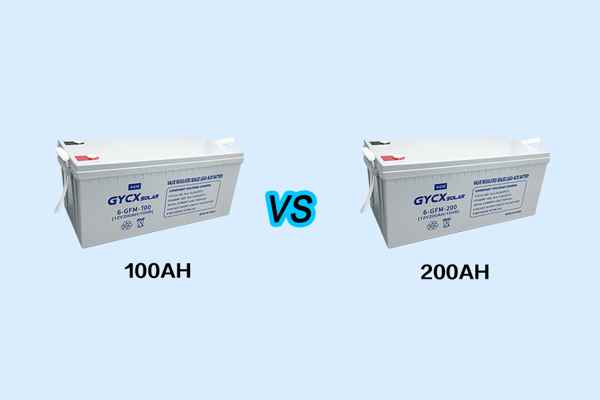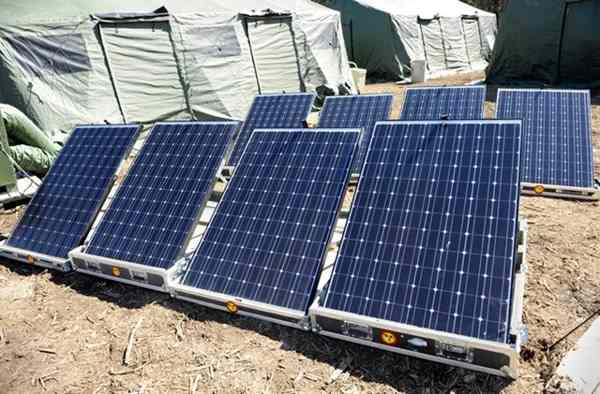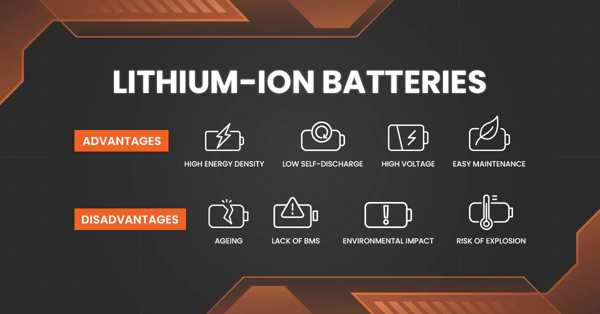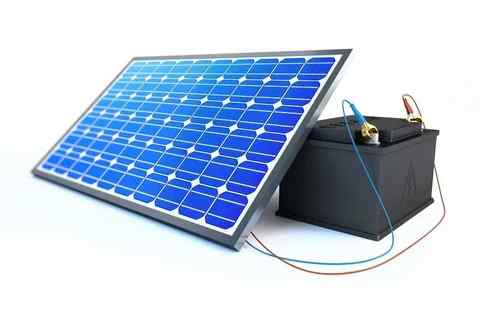Quanto tempo durará uma bateria de lítio de 48V 100Ah?
Considerando uma bateria de lítio de 48V 100Ah para suas necessidades de armazenamento de energia? É um tamanho popular, especialmente para sistemas solares residenciais ou poder de backup robusto. Mas a grande questão na mente de todos é: quanto tempo vai realmente durar com uma única carga? A verdade é, Sua resistência depende inteiramente do que, e quanto, Você está alimentando.
Uma bateria de lítio de 48V 100Ah armazena aproximadamente 4.8 quilowatt-hora (kWh) de energia (48 Volts x 100 Amp-hours = 4800 Watt-hora). Quanto tempo isso 4.8 KWH vai durar de apenas algumas horas se você estiver executando cargas pesadas, para mais de um dia, se você estiver apenas alimentando essencial, dispositivos de baixa potência. Por exemplo, poderia alimentar uma carga contínua de 480 watts para cerca de 10 horas, ou uma carga de 100 watts para quase 48 horas, Supondo que você possa usar toda a sua capacidade (As baterias modernas de lítio LFP geralmente permitem descarga muito profunda).

No Gicx Solar, Frequentemente trabalhamos com 48V Baterias de lítio de montagem em rack, normalmente usando fosfato de ferro de lítio seguro e duradouro (LFP) química. Essas unidades modulares, frequentemente chegando em capacidades 100AH (cerca de 5kwh cada), são fantásticos para a construção de sistemas de armazenamento de energia escalável. Vamos quebrar como descobrir o tempo de execução e responder a outras perguntas comuns sobre essas baterias de cavalo de trabalho.
Qual é a diferença entre 100AH e 200H bateria?
Quando você está olhando para as baterias, Você verá classificações de capacidade como 100AH ou 200AH. Se você está tentando decidir qual tamanho é adequado para você, Qual é a diferença real em termos práticos? Compreender isso afeta diretamente quanto tempo durará sua energia armazenada.
Supondo que ambas as baterias sejam da mesma tensão (Por exemplo, Ambos são sistemas de 48V), um 200Ah bateria tem exatamente o dobro da capacidade de armazenamento de energia Como uma bateria 100AH. Isso significa, Para a mesma carga conectada, A bateria 200AH fornecerá aproximadamente duas vezes o tempo de execução. Consequentemente, Uma bateria 200AH também será fisicamente maior, mais pesado, e mais caro que uma bateria 100AH da mesma química e qualidade de construção.

Mergulhe mais fundo: Amp-hors, Quilowatt-hora, E o que eles significam para você
Vamos entender claro estes termos:
- Amp-hors (Ah): Esta classificação informa quantos amplificadores uma bateria pode teoricamente entregar por um certo número de horas. Uma bateria 100AH poderia (em teoria) entregar 100 amplificadores para 1 hora, ou 10 amplificadores para 10 horas, ou 1 amplificador para 100 horas.
- Quilowatt-hora (kWh): Esta é a verdadeira medida do total energia armazenado na bateria. É o que você paga na sua conta de eletricidade. Você calcula isso por:
kWh = (Tensão (V) x amp-horas (Ah)) / 1000- Para uma bateria de 48V 100AH: (48V x 100ah) / 1000 = 4.8 kWh
- Para uma bateria de 48V 200AH: (48V x 200AH) / 1000 = 9.6 kWh
Então, As 48V 200AH de lojas de baterias 9.6 kWh de energia, Enquanto os 48V 100AH de lojas de baterias 4.8 kWh.
- Implicação de tempo de execução: Se você tem uma carga consistente, dizer 500 watts (0.5 kW):
- 48Em 100ah (4.8 kWh) Tempo de execução: 4.8 kWh / 0.5 kw = 9.6 horas (aproximado, Antes de considerar a profundidade da descarga).
- 48Em 200h (9.6 kWh) Tempo de execução: 9.6 kWh / 0.5 kw = 19.2 horas (aproximado).
- Tamanho físico e peso: Geralmente, Dobrar a capacidade de AH, mantendo a tensão e a química celular, o mesmo significa dobrar aproximadamente o número de células internas, levando a um aumento quase proporcional de tamanho e peso.
- Custo: Mais capacidade significa mais matérias -primas e células, Então, uma bateria 200AH custará mais de um 100H.
- Escalabilidade com baterias de montagem em rack: É aqui que nosso solar gycx 48V Baterias de lítio de montagem em rack brilhar. Muitos são projetados como ~ 100Ah (5kWh) módulos. Se você precisar de 200AH (10kWh) de armazenamento, Você simplesmente instala dois desses módulos em paralelo. Precisa de 300AH (15kWh)? Adicione um terceiro. Essa modularidade permite dimensionar com precisão o seu sistema e expandi -lo mais tarde se suas necessidades crescerem.
Quantos painéis solares eu preciso para carregar uma bateria de lítio de 48V?
Você decidiu um banco de bateria de 48V de lítio, Talvez um 100AH robusto (4.8kWh) Módulo LFP, E você quer cobrar com eficiência com a energia solar. Como você descobre o número certo e o tamanho dos painéis solares para o trabalho? O dimensionamento adequado é a chave para garantir que sua bateria seja totalmente carregada em um prazo razoável.
O número de painéis solares necessários depende de vários fatores: seu Capacidade total da bateria (kWh) que precisa ser reabastecido, seu Horário médio diário de pico do sol da localização geográfica, o Wattage dos painéis solares você escolhe, e a Eficiência do seu controlador de carga solar e sistema geral. Como um exemplo difícil, para cobrar de 4,8kwh de forma confiável (48V 100ah LFP) bateria diariamente, assumindo 4-5 Horário de pico do sol e eficiências típicas do sistema, você pode precisar ao redor 1 quilowatt (kW) para 1.5 KW de painéis solares. Podem ser três painéis de 400W ou quatro painéis de 350W, por exemplo.

Mergulhe mais fundo: Calculando o tamanho da sua matriz solar
Aqui está uma abordagem mais detalhada para dimensionar sua matriz solar para sua bateria de lítio de 48V:
- Determine a energia diária para reabastecer (kWh):
- Se você está pedalando seu 48V 100AH (4.8 kWh) bateria diariamente e usando, dizer, 80% da sua capacidade (Profundidade de descarga - DOD), você precisa reabastecer: 4.8 kWh * 0.80 = 3.84 kWh.
- Encontre o seu horário médio de pico do sol: Isso é crucial e varia de acordo com o local e a época do ano. Não é apenas o horário de luz do dia total, Mas as horas equivalentes de pleno, Pico do sol. Você pode encontrar esses dados para sua área online (Por exemplo, de mapas nrel para os EUA). Vamos supor que você obtenha 4 Horário de pico do sol por dia em média.
- Contas de perdas do sistema & Ineficiências: Nem toda a energia que seus painéis produzem transformam em sua bateria. Espere perdas de:
- Deating de temperatura do painel solar (Os painéis produzem menos quando quente).
- Perdas de fiação.
- Eficiência do controlador de carga (Os controladores MPPT são normalmente 90-98% eficiente, PWM são menores).
- Eficiência de carregamento da bateria (LFP é muito bom, muitas vezes >95%).
- Sujeira do painel, envelhecimento, etc..
Uma estimativa conservadora para perdas totais do sistema pode ser 15-25%. Então, Seu fator de eficiência eficaz pode estar por perto 0.75 para 0.85.
- Calcule a energia da matriz solar necessária (kW):
- Fórmula: Poder de matriz solar (kW) = Energia diária necessária (kWh) / (Horário de pico do sol x fator de eficiência do sistema)
- Exemplo: Usando nossos números: 3.84 kWh / (4 horas x 0.80 eficiência) = 3.84 / 3.2 = 1.2 kW.
Então, Você precisaria de uma matriz solar de aproximadamente 1200 watts (1.2 kW).
- Escolha a potência e o número do painel: Você pode obter 1200W com três painéis de 400W, ou quatro painéis de 300W, etc..
- Configuração de tensão para bateria de 48V: Os painéis solares devem ser conectados em série/cadeias paralelas para fornecer uma tensão que é:
- Mais alto que a tensão de carregamento da bateria (Uma bateria de 48V LFP pode carregar até ~ 57,6V).
- Dentro da janela de tensão de entrada operacional do seu controlador de carga solar MPPT.
Tipicamente, Para um sistema de bateria de 48V, Você deseja um VOC de matriz (Voltagem de circuito aberto) significativamente maior, frequentemente na faixa de 70V-150V ou mais, Dependendo do controlador de carga.
História solar Gycx: Recentemente, projetamos um sistema fora da grade para um cliente usando duas de nossas baterias LFP de montagem de rack 100ah de 48V (9.6KWH total). Com base nas horas do sol e necessidades de energia da localização deles, Combinamos com uma matriz solar de 2,5kW e um controlador de carga MPPT de alta eficiência. Isso garante que suas baterias sejam totalmente carregadas mesmo em dias com sol menos do que perfeito, fornecendo poder confiável.
Quais são as desvantagens das baterias de lítio para painéis solares?
Baterias de lítio, Especialmente tipos de LFP como os de nossa energia solar GYCX 48V rack de montagem em bateria de lítio soluções, são uma excelente opção para armazenamento de energia solar devido à sua longa vida, alta eficiência, e segurança. No entanto, como qualquer tecnologia, Eles não estão sem algumas considerações em potencial ou desvantagens percebidas quando comparadas a outras opções ou cenários ideais.
As principais desvantagens frequentemente citadas para baterias de lítio em aplicações solares incluem seus maior custo inicial comparado às baterias tradicionais de ácido chumbo (Embora sua vida útil mais longa geralmente resulte em um menor custo total de propriedade). Eles também podem ser sensível a temperaturas extremas (muito quente e muito frio), exigindo um bom sistema de gerenciamento de bateria (BMS1. ) e às vezes gerenciamento térmico para desempenho e longevidade ideais. Enquanto geralmente muito seguro (Especialmente LFP), sua alta densidade de energia significa Requisitos de carregamento específicos deve ser atendido (tratado pelo BMS e controlador de carga), e Reciclagem no final da vida é uma indústria em evolução, Embora melhore rapidamente.

Mergulhe mais fundo: Um olhar equilibrado em lítio para solar
Vamos abordar esses pontos construtivamente:
- Custo inicial: Este é frequentemente o maior obstáculo. Baterias de lítio, Células LFP particularmente de alta qualidade com BMS integrados, ter um preço de compra inicial mais alto do que as tecnologias mais antigas, como o chumbo-ácido inundado.
- Perspectiva solar GYCX: Incentivamos os clientes a olhar para o Custo total de propriedade (TCO) ou Custo de armazenamento nivelado (LCOS). As baterias de lítio oferecem muito mais ciclos (Por exemplo, 6,000+ para LFP vs.. 500-1,000 para chumbo-ácido), capacidade de descarga mais profunda, maior eficiência, e são livres de manutenção. Sobre o deles 10-20 vida útil do ano, Eles costumam ser mais econômicos.
- Sensibilidade à temperatura:
- As baterias de lítio têm melhor desempenho em temperaturas moderadas (Por exemplo, 15-30° C ou 59-86 ° F.). O frio extremo pode reduzir temporariamente sua capacidade disponível e capacidade de aceitar uma cobrança. O calor extremo pode acelerar a degradação e diminuir sua vida útil.
- Perspectiva solar GYCX: Nossas baterias de montagem em rack LFP recomendadas vêm com um BMS integrado que inclui monitoramento e proteção de temperatura. Para instalações em climas desafiadores, Também podemos projetar sistemas com gabinetes apropriados e até gerenciamento térmico ativo, se necessário, para manter as baterias dentro de sua faixa operacional ideal.
- Requisitos de carregamento específicos:
- As baterias de lítio precisam de tensão precisa e controle de corrente durante o carregamento, gerenciado por um controlador de carga compatível e o BMS. Você não pode simplesmente conectá -los a nenhuma fonte de energia.
- Perspectiva solar GYCX: Este é um problema com sistemas projetados profissionalmente. Garantimos que o controlador de carga solar (muitas vezes parte de um inversor híbrido) é perfeitamente combinado com as especificações das baterias LFP, fornecendo carregamento ideal e seguro de vários estágios.
- Ambiental & Preocupações de reciclagem:
- A mineração de lítio e outros materiais, e a energia usada na fabricação, ter uma pegada ambiental. A reciclagem de fim de vida para baterias de lítio é mais complexa do que para chumbo-ácido.
- Perspectiva solar GYCX: Nós favorecemos a química da LFP, O que evita o cobalto e o níquel - dois materiais com preocupações significativas de fornecimento ambiental e ético. A indústria de reciclagem de bateria de lítio também está crescendo rapidamente, com mais instalações e processos aprimorados se tornando disponíveis para recuperar materiais valiosos. Incentivamos o gerenciamento responsável no final da vida.
Enquanto essas são considerações válidas, As vantagens significativas das baterias de lítio LFP - sua longa vida útil de ciclo, alta eficiência, capacidade de descarga profunda, segurança, e operação sem manutenção-faça deles a principal escolha para soluções modernas de armazenamento de energia solar.
Posso carregar minha bateria de lítio diretamente de um painel solar?
Você tem um painel solar, E você tem uma bateria de lítio. Pode parecer lógico conectar os dois diretamente para carregar sua bateria com energia solar gratuita. No entanto, Esta é uma pergunta comum com uma resposta muito importante para a segurança e a saúde da sua bateria.
Não, você absolutamente deveria não Carregue uma bateria de lítio (incluindo um sistema de 48V como nossas unidades de montagem em rack) diretamente de um painel solar sem um dispositivo intermediário crucial. Você deve usar um controlador de carga solar posicionado entre o painel solar(s) e a bateria. O trabalho do controlador de carga é regular a tensão e a corrente provenientes dos painéis solares para garantir que a bateria seja carregada com segurança, com eficiência, e sem risco de sobrecarga ou outros danos.
 **X (Sem conexão direta)** -> Bateria. Então, Painel solar -> **Controlador de carga (Correto!)** -> Bateria.">
**X (Sem conexão direta)** -> Bateria. Então, Painel solar -> **Controlador de carga (Correto!)** -> Bateria.">
Mergulhe mais fundo: Por que um controlador de cobrança não é negociável
Eis por que a conexão direta é uma má ideia e por que um controlador de cobrança é essencial:
- Incompatibilidade de tensão & Regulamento: A tensão de saída do painel solar flutua significativamente com a intensidade da luz solar e a temperatura do painel. Essa tensão geralmente pode ser muito maior que a tensão máxima de carregamento segura para a sua bateria de lítio. Por exemplo, Um painel projetado para carregar um sistema de 12V pode ter uma tensão de circuito aberto (Voc) de 22V ou superior. Uma bateria nominal de 48V LFP precisa de uma tensão de carregamento com precisão controlada (Por exemplo, até cerca de 56-58V). Conectar um painel diretamente pode enviar instantaneamente alta tensão à bateria. Um controlador de carga (especialmente um tipo MPPT) leva a saída do painel variável e a converte para o ideal, tensão estável exigida pela bateria.
- Controle atual: Os painéis solares também podem produzir correntes altas em sol brilhante. Enquanto as baterias podem aceitar a corrente até uma determinada taxa (sua "taxa C"), exceder isso pode causar superaquecimento e dano. Um controlador de carga limita a corrente a um nível seguro para a bateria.
- Proteção sobrecarrega: Esta é talvez a função mais crítica. As baterias de lítio são muito sensíveis à sobrecarga. Se você pressionar continuamente a corrente para uma bateria completa de lítio, pode levar ao superaquecimento, inchaço, ventilação, e potencialmente térmico fugitivo (fogo). Um controlador de carga sente quando a bateria está cheia e interrompe o processo de carregamento ou muda para um "flutuador muito baixo" atual (Se aplicável para as configurações de química e BMS).
- Estágios de carregamento otimizados: Controladores de carga modernos (Especialmente tipos MPPT) Use algoritmos de carregamento em vários estágios (Por exemplo, Volume, Absorção, Flutuar - embora "flutuar" é menos crítico ou diferente para LFP) carregar a bateria com eficiência e promover sua longevidade. A conexão direta não oferece essa inteligência.
- Prevenção atual reversa: À noite, ou quando a tensão do painel é menor que a tensão da bateria, Um controlador de carga impede a corrente de fluir de a bateria de volta para o painel solar, que drenaria a bateria.
História solar Gycx: Certa vez, encontramos uma configuração de bricolage onde alguém tentou carregar diretamente uma pequena bateria de lítio de um painel. A bateria estava inchada e claramente danificada. Elevou para nós por que sempre enfatizamos que todo sistema solar GYCX, do menor ao maior, Incorpora um controlador de carga MPPT de alta qualidade correspondente precisamente à matriz solar e às nossas baterias LFP de montagem em rack de 48V. É fundamental para segurança e vida útil do sistema.
Compreender quanto tempo uma bateria de lítio 100AH de 48V 100 envolve analisar suas necessidades de energia específicas, Ao escolher entre capacidades como 100AH e 200AH, depende do tempo de execução e do orçamento desejado.
Carregar essas baterias avançadas com segurança e eficácia de painéis solares sempre requer uma matriz solar de tamanho adequado e um controlador de carga dedicado. Enquanto as baterias de lítio têm algumas considerações, seus benefícios para o armazenamento solar, Especialmente tipos de LFP em projetos de montagem em rack modulares, são atraentes.
Se você tiver mais perguntas sobre as baterias de lítio de montagem de 48V rack, Como dimensionar um sistema para suas necessidades, ou a melhor maneira de integrá -los com solar, A equipe solar GYCX está aqui para fornecer orientação especializada. Entre em contato conosco hoje para discutir seu projeto de armazenamento de energia!
Entenda os componentes de equipamentos relacionados da bateria LifePO4, como sistema de gerenciamento de bateria, Para comparar e entender melhor os conceitos de dados relacionados às baterias de lítio. Isso ajudará você a escolher um produto que melhor atenda às suas necessidades. ↩
